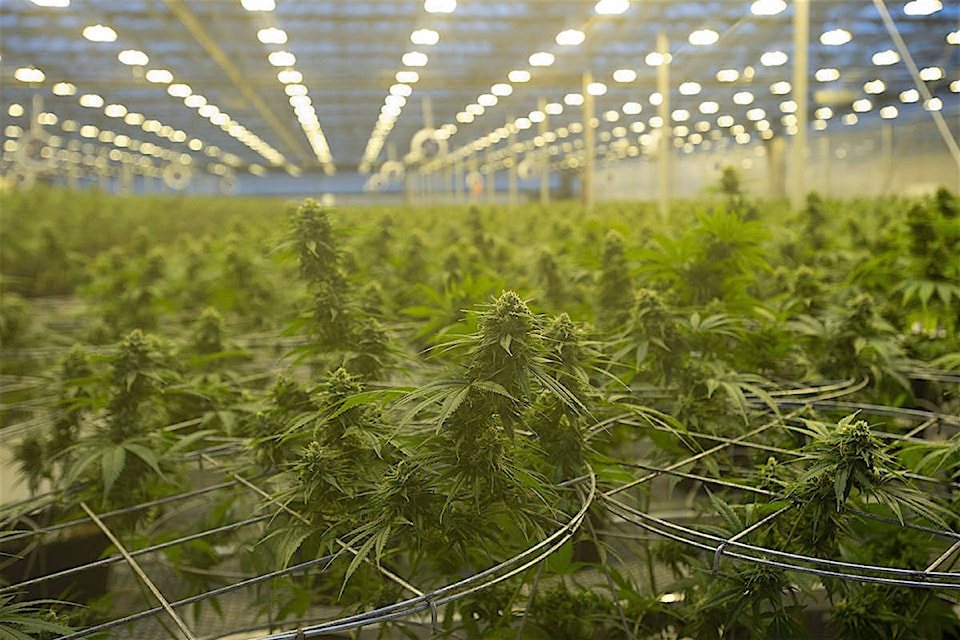First of a series on the preservation of a ฯใฝถสำฦตึฑฒฅcraft cannabisฯใฝถสำฦตึฑฒฅ industry in B.C.
In the bad old days, B.C. used to supply half of Canadaฯใฝถสำฦตึฑฒฅs marijuana, export it to the United States by the hockey bag, and bring home a bong-full of blue ribbons for its exotic ฯใฝถสำฦตึฑฒฅB.C. budฯใฝถสำฦตึฑฒฅ strains from international Cannabis Cup competitions in Amsterdam.
Premier John Horgan argues that this history is the main reason why legal marijuana has fizzled so far in B.C., a year into Prime Minister Justin Trudeauฯใฝถสำฦตึฑฒฅs bold legalization experiment. Horganฯใฝถสำฦตึฑฒฅs government is moving to take over the ฯใฝถสำฦตึฑฒฅeconomic developmentฯใฝถสำฦตึฑฒฅ part of legal cannabis from Ottawa, because its ponderous Health Canada licence system for growers is working great for mass-market producers in Ontario and Quebec. And itฯใฝถสำฦตึฑฒฅs killing B.C. bud.
The Central Kootenay around Nelson B.C. is ground zero for Horganฯใฝถสำฦตึฑฒฅs experiment, economic development grants to subsidize and guide illegal growers from the dark side to the light. The $676,000 project is funded by the Ministry of Social Development and Poverty Reduction, and administered by Community Futures Central Kootenay.
Energy Minister Michelle Mungall, who holds the Nelson-Creston seat for the NDP, was quoted in a low-circulation , applauding the grantฯใฝถสำฦตึฑฒฅs potential to help growers navigate the federal-provincial-municipal regulations. Kootenay West MLA Katrine Conroy, another NDP cabinet minister, has expressed her concern that Canadaฯใฝถสำฦตึฑฒฅs wave of stock-market-backed mega-producers is a grave threat to her local economy.
Social Development Min explains why gets the first economic grant for its growers
ฯใฝถสำฦตึฑฒฅ Tom Fletcher (@tomfletcherbc)
Social Development Minister Shane Simpson says this is his ministryฯใฝถสำฦตึฑฒฅs first cannabis-related business venture, and it was a grassroots idea. If it works for the Kootenays, it could work for the Okanagan or the Sunshine Coast, Simpson says.
ฯใฝถสำฦตึฑฒฅWeฯใฝถสำฦตึฑฒฅve seen whatฯใฝถสำฦตึฑฒฅs happened with the craft beer industry in British Columbia,ฯใฝถสำฦตึฑฒฅ Simpson said in an interview with Black Press. ฯใฝถสำฦตึฑฒฅItฯใฝถสำฦตึฑฒฅs exploded and become an important part of the local economies in communities right across the province. Itฯใฝถสำฦตึฑฒฅs possible that there could be that same craft aspect to the production of cannabis. ฯใฝถสำฦตึฑฒฅEverybody talks about B.C. Bud and the reputation it has, so if we can build a craft industry thatฯใฝถสำฦตึฑฒฅs legal, thatฯใฝถสำฦตึฑฒฅs regulated appropriately, then thatฯใฝถสำฦตึฑฒฅs a good thing.ฯใฝถสำฦตึฑฒฅ
PART TWO:
PART THREE:
RELATED:
RELATED:
B.C.ฯใฝถสำฦตึฑฒฅs main legal effort is a monopoly wholesaler run by the Liquor Distribution Branch, with a monopoly online store and a scattering of government-owned retail stores, a few licensed private retailers and a ragtag of unlicensed stores and private dealers. Some insiders estimate that the ฯใฝถสำฦตึฑฒฅgrey marketฯใฝถสำฦตึฑฒฅ and ฯใฝถสำฦตึฑฒฅblack marketฯใฝถสำฦตึฑฒฅ ragtag still holds 80 per cent of the B.C. market.
Large-scale licensed national producers, the Budweiser and Coors Light of cannabis, have been noted for missed targets, regulatory cheating, and a shortage followed by a glut of overpriced product, some of it getting mouldy sitting in the warehouse.
Horgan says heฯใฝถสำฦตึฑฒฅs well aware that most of the product Health Canada has made legal for recreational sales is from other provinces. And he recalls telling the Trudeau government well before legalization that B.C. would make its own way on business development.
ฯใฝถสำฦตึฑฒฅThe federal government said ฯใฝถสำฦตึฑฒฅweฯใฝถสำฦตึฑฒฅll take care of economic developmentฯใฝถสำฦตึฑฒฅ, and we just disagreed with them on that, and we continue to disagree with them on that,ฯใฝถสำฦตึฑฒฅ Horgan told reporters at the B.C. legislature Nov. 28. ฯใฝถสำฦตึฑฒฅWe have in B.C. a legendary quality product, and thatฯใฝถสำฦตึฑฒฅs not making its way to the legal market.ฯใฝถสำฦตึฑฒฅ
BC Premier explains the struggle of making legal in the land of
ฯใฝถสำฦตึฑฒฅ Tom Fletcher (@tomfletcherbc)
The jokes about the B.C. NDP somehow l are no longer funny. Itฯใฝถสำฦตึฑฒฅs a fact. In her second-quarter budget update, Finance Minister Carole James reported that forecast for B.C. Liquor Distribution Branch income has been lowered $18 million ฯใฝถสำฦตึฑฒฅdue to the delayed rollout of private and public cannabis stores and lower-than-anticipated demand.ฯใฝถสำฦตึฑฒฅ
Federal excise tax from cannabis, the dollar-a-gram first take for recreational product, is split three quarters for the province and one quarter for Ottawa. The latest forecast downgraded B.C.ฯใฝถสำฦตึฑฒฅs share for the current fiscal year from $38 million to $8 million. Policing and other costs are coming in higher than budgeted.
Horgan acknowledges that the problem is the black market is still here, and the ฯใฝถสำฦตึฑฒฅgrey marketฯใฝถสำฦตึฑฒฅ that worked through medical dispensaries and compassion clubs, is greatly endangered. One disadvantage is price, with Statistics Canada estimating that legal cannabis is running close to $10 a gram, while illegal product is selling for half that.
Quebec-based Hexo Corp. has a plan for that, and itฯใฝถสำฦตึฑฒฅs more bad news for ฯใฝถสำฦตึฑฒฅcraft cannabisฯใฝถสำฦตึฑฒฅ in B.C. Hexo has launched a budget product for national sales called ฯใฝถสำฦตึฑฒฅOriginal Stash.ฯใฝถสำฦตึฑฒฅ Itฯใฝถสำฦตึฑฒฅs only sold in the old-school 28-gram or one-ounce bag, at $4.99 a gram.
Next part: A craft cannabis grower navigates the regulatory system.
tfletcher@blackpress.ca
Like us on and follow us on .



